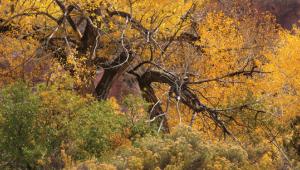A Long Shot; The Quest For A Ghost Orchid Page 2
For the next three weeks the orchid became my obsession. Leaving the house at 3:30pm and traveling 28 miles to the swamp, I’d set up just before the afternoon thunderstorms. I’d cover my gear up until the storm passed and then hope the sun would come out long enough to light the orchid for a few minutes before sunset. Not only did the boardwalk vibrate from people walking, but the orchid 50 ft in the air was bobbing up and down in the breeze. To dampen the vertical vibrations from the boardwalk I used my monopod and attached a bolt extender to the stud on the monopod where the ball head attaches; I then screwed my ball head to the assembly and attached it to the L bracket on my camera (#2).
 |
|
|
I aimed the camera a little above the orchid and tightened the sidekick, then screwed the ball head connected to the L bracket and monopod up, which pushed the lens down until it was lined up. I tied two ratchet straps to the ball head attached to the monopod and anchored them to the boardwalk at 45? angles (#3). That took care of the horizontal and vertical vibrations.
 |
|
|
A spotting scope allowed me to use the mirror lockup. When the orchid stopped moving I used my radio remote to fire the camera. Some days the clouds never cleared off and it stayed too dark. The days that it did clear off and the sun came out made the whole vigil worth it. A reporter asked me what it took to get this shot; I replied: 28 days, 1568 miles and 116 gallons of gas, 112 hours in the field (I don’t know how many on the computer), four bad thunderstorms, hunkering down under a tarp with 200 mosquitoes, inventing a tie-down rig, 63 miles of walking, and $8500 worth of new gear. The fact that I got it, “priceless.”
R J Wiley is resident photographer at Corkscrew Swamp Sanctuary and a free-lance photographer in Southwest Florida. His work may be seen at: www.rjwileyphoto.com and www.adayintheswamp.com.
- Log in or register to post comments

















































